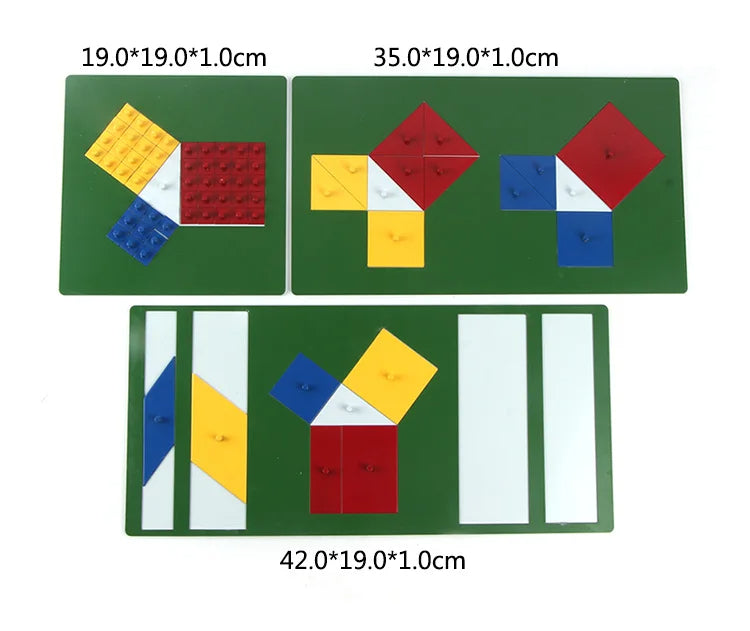1
/
of
2
Mo099 - Montessori Theorem Of Pythagoras
Mo099 - Montessori Theorem Of Pythagoras
Regular price
$124.00
Regular price
Sale price
$124.00
Unit price
/
per
Taxes included.
Low stock: 2 left
Couldn't load pickup availability
This activity provides a concrete representation of the Pythagorean Theorem using triangles, rectangles, and squares. It visually demonstrates that the area of the square built on the hypotenuse of a right-angled triangle is equal to the sum of the areas of the squares built on the other two sides.
Features:
- Three Stages of the Theorem – Depicts different cases of the Pythagorean Theorem through three green metal plates.
- Step-by-Step Understanding – The first plate proves two sides of the triangle are equal, the second shows a 3:4:5 proportion, and the third (Euclid’s Plate) extends the theorem.
- Color-Coded Insets – Each plate contains specific geometric shapes for hands-on learning, including squares, rectangles, triangles, and parallelograms.
- Progressive Learning Approach – Introduced after mastering constructive blue triangles to build on prior knowledge.
Educational Benefits:
- Direct Objective – Helps children understand how the Pythagorean Theorem works.
-
Indirect Learning Outcomes:
- Develops problem-solving strategies.
- Encourages logical communication and justification of conclusions.
- Enhances creative thinking in devising solutions.
Contents & Dimensions:
- 1st Plate (Smallest): 19 x 19 x 1 cm
- 2nd Plate (Middle): 35 x 19 x 1 cm
- 3rd Plate (Largest): 42 x 19 x 1 cm
-
Insets Include:
- Red square and red rectangle
- Blue square
- Yellow square
- White triangle
- Blue parallelogram (only on the 3rd plate)
- Yellow parallelogram (only on the 3rd plate)
Share



